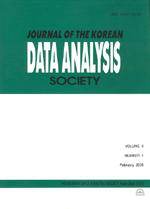과속운전과 교통사고에 미치는 운전분노와 성격 5요인의 상호작용
Interaction Effects of Driving Anger and Big-5 Personality Factors on Speeding Violations and Road Accidents
- 한국자료분석학회
- Journal of The Korean Data Analysis Society (JKDAS)
- Vol.14 No.4
-
2012.082081 - 2095 (15 pages)
- 26

운전자들의 운전분노 수준과 성격 5요인이 과속위반이나 교통사고에 어떠한 형태로 상호작용하여 영향을 미치는지 살펴보았다. 자료는 일반 운전자들을 대상으로 설문조사를 통해 수집되었다. 본 연구의 주요 결과와 시사점을 요약하면 다음과 같다. 첫째, 운전분노 수준은 과속운전 빈도와 유의한 정적 상관을 보인 반면, 교통사고 빈도와는 유의한 관련성을 보이지 않았다. 둘째, 성격 5요인 중 외향성이 높을수록 과속위반과 교통사고 빈도가 모두 증가하였고, 개방성은 과속운전 빈도와 정적으로, 반면 성실성은 교통사고 빈도와 부적으로 관련성을 보였다. 셋째, 과속위반 빈도에 대해 운전분노와 외향성, 그리고 운전분노와 개방성 사이의 유의한 상호작용 효과가 각각 관찰되었다. 즉, 속도위반 빈도에 대한 운전분노의 효과는 외향성과 개방성 수준이 높은 집단에서만 유의하였다. 이러한 결과는 운전자의 운전분노와 성격 5요인의 결합유형에 따라 운전자의 운전행동이 달라질 수 있음을 시사한다.
Contrasting to the previous studies which generally treated driver’s personality factors independently, this study investigated the differential interactive effects of the driving anger and Big-5 personality factors on the number of driver’s speeding violations and road accidents. Data were collected by using questionnaire administrated in a form of face-to-face interview. The results showed the followings. First, driving anger was found to be positively related to the number of speeding violations, not that of road accidents. Second, among the Big-5 personality factors, extraversion predicted both the speeding violations and road accidents positively, whereas openness was positively related only to the number of speeding violations, and conscientiousness was negatively related only to the number of road accidents. Third, the significant interaction effect of driving anger and extraversion, as well as that of driving anger and openness on the number of speeding violations were found. Specifically, the effect of extraversion on speeding violation was significant only in the higher driving anger group, whereas that of openness on speeding violation was significant only in lower driving anger group. These results suggested that investigating combined effects of various personality factors of a driver can provided very specific and rich information about driver’s driving behavior.
1. 서론
2. 연구 방법
3. 결과
4. 결론 및 논의
참고문헌
(0)
(0)